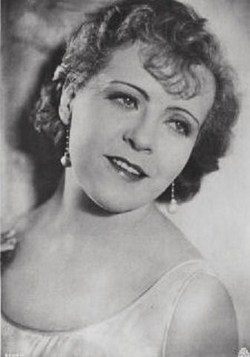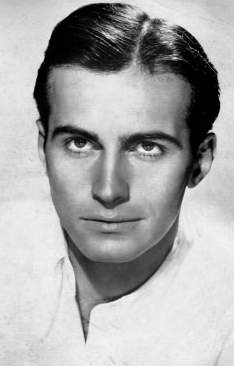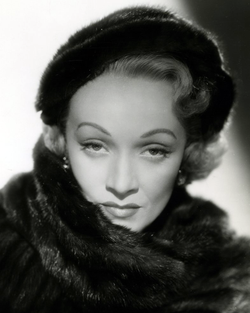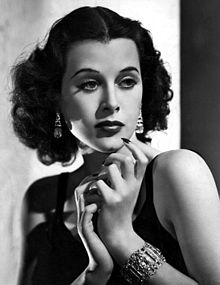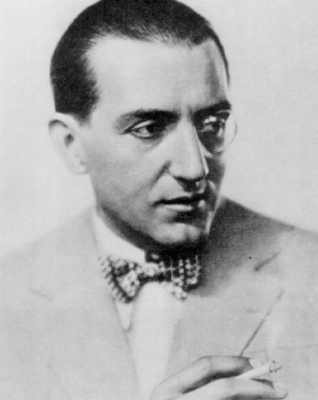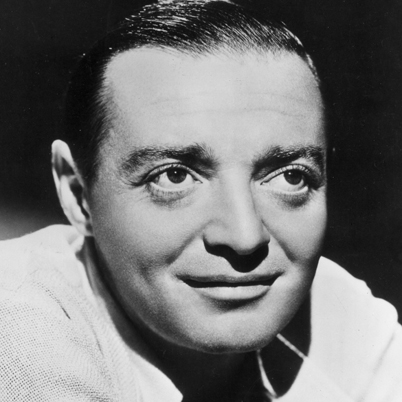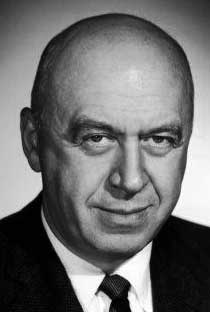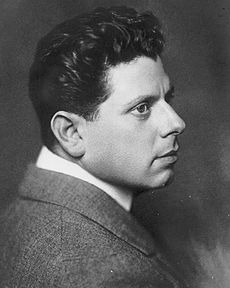Holocaust Education & Archive Research Team |
Holocaust Prelude Early Nazi Leaders Nazi Propaganda Nazi Racial Laws Sinti & Roma Kristallnacht The SS SS Leadership Wannsee
Prelude Articles Image Galleries | |||||
Hollywood and the Holocaust The Silver Screen Fugitives
Fleeing the Nazis This article covers the biographies of actors, actresses and directors who escaped from the Nazis and became famous in Hollywood and beyond. Many made themselves household names across the western world. Not all were Jewish, but all of them despised the Nazis, and what the Third Reich stood for.
Mady Christians Mady Christians was born in 1900. In 1912 Mady made a film in America for the German-American theatre. She returned to Europe to study under Max Reinhardt, the renowned theatrical director, and during the 1920’s she starred in many German stage productions. In 1933, with the advent of the Third Reich she left Germany for good. Her most famous film role was the title character in I Remember Mama, in 1944. Not long before her death in 1951, she was blacklisted by Hollywood for alleged Communist activities. Helmut Dantine Helmut Dantine was born on 7 October 1917 in Vienna. Dantine fled to the United States in the late 1930’s to escape the Nazi Anschluss in Austria. His handsome features won him many roles playing Nazis for Warner Brothers during the Second World War. After his film career ended he turned to producing and in 1970 he became president of Schenk Enterprises. Marlene Dietrich Marlene Dietrich was born in Schoneberg, Berlin on 27 December 1901, her father was a police lieutenant. Dietrich studied with Max Reinhardt, the Austrian – American theatrical director and begun her acting career in 1922. In 1924 she married Rudolf Sieber, and they had a daughter.
She achieved international fame with her performance in Emil Jannings’ The Blue Angel’ in 1930. Dietrich adamantly refused to live in Germany during the Nazi regime. After 1937 she worked mainly in American films where her distinctive voice and theatrical mannerisms won her many acclaimed roles. While in England in 1937 filming ‘Knight Without Armour,’ she was approached by the German Ambassador to Great Britain, Joachim von Ribbentrop, with a personal and generous offer from Hitler to return to Nazi Germany. She refused this offer, and subsequently as a result of this her films were banned in Germany. During the Second World War Dietrich entertained American troops and made anti-Nazi broadcasts in German. She was awarded the Medal of Freedom. In the 1950’s she embarked with great success on a new career as a cabaret singer, two of her best known songs were ‘Falling in Love Again’ and ‘Lilli Marlene.’. Hedy Lamar Hedwig Eva Maria Kiesler was born in Vienna on 9 November 1913, the daughter of a Jewish banker. Hedy was discovered by Max Reinhardt in 1930 who put her into films as a bit player. She won instant fame when she appeared naked in a ten-minute sequence of a 1933 Czech production of Ecstasy. She then married munitions magnate Fritz Mandl who tried to buy up all the prints of this ‘scandalous’ movie. After the advent of the Nazis, Hedy was forced to leave Germany. She arrived in Hollywood billed as ‘the world’s most beautiful woman.’ For once the press did not exaggerate. After making a number of successful films, all illuminated by her radiance, such as ‘Algiers’ in 1938 and ‘White Cargo’ in 1942, however, her most memorable film was ‘Samson and Delilah’ in 1949.Hedy was cast away by the moguls of Hollywood and she died in Florida on 19 January 2000. Fritz Lang Fritz Lang was born on 5 December 1890 in Vienna. Lang studied to become an architect but at twenty he ran away from home to lead the life of an artist in Munich and Paris. He then wandered through Africa, China and Russia, supporting himself by painting and selling picture postcards, just like Adolf Hitler did in Vienna.
On the outbreak of the First World War he was conscripted into the Austrian army. He was wounded four times and rose to the rank of lieutenant and while convalescing from his wounds he began to write film scripts. His success in this field led in 1919 to a job as director with the Decla Company in Berlin. In 1924 during a brief visit to America Lang was so impressed with the New York skyline and the wildly rushing crowds of people that he conceived the idea for his next film, Metropolis, which was released in 1927, a landmark in movie history. Four years later Lang created the famous masterpiece M probably based on the true case of the child murdered Peter Kuerten in Dusseldorf. Lang’s next film was the Last Will of Dr Mabuse in 1933, in which Nazi slogans were constantly mouthed by the film’s most evil characters. The film was banned by the Nazis and Lang whose mother was Jewish, was summoned to the office of Dr Josef Goebbels, the propaganda minister. To Lang’s utter astonishment, Goebbels apologised for the ban and informed Lang that Adolf Hitler had personally requested the appointment of Lang to supervise and direct Nazi film productions. Fearing that Goebbels would discover his Jewish background, Lang took the next train to Paris leaving everything behind. Lang’s extraordinary contributions to the movie industry continued when he emigrated to America where he received his citizenship papers in 1935. He made several powerful anti-Nazi films. Most of his movie themes were built around criminals and violence and the inexorability of fate. Lang spent his final years in retirement in his Beverly Hills home. He died on 2 August 1976. Peter Lorre Peter Lorre was born Laszlo Lowenstein on 26 June 1904 in Hungary. He started his career as a bank clerk, then studied acting in Vienna and made his debut in Zurich. He was still an unknown when Fritz Lang cast him as a psychopathic child murderer in the film ‘M’. Lorre’s sinister, pathetic expression and mysterious, quietly menacing manner won him world-wide fame. He appeared in several other German films but when the Nazis took over power in Germany he fled to Paris, then to London and finally in 1935 to Hollywood. In America he continued his inscrutable roles, starring as ‘Mr Moto.’ He appeared in several outstanding movies with Humphrey Bogart, including ‘Casablanca’ and ‘The Maltese Falcon.’ Lorre died at 60 –years of age of a heart attack on 23 March 1964. Roman Polanski Roman Polanski was born in 1933 in Paris. His parents Ryszard and Bula returned to Poland from France in 1936. After the German invasion of Poland his family was sent to the Krakow ghetto. His parents were arrested by the Germans. His father was sent to the Mauthausen concentration camp in Austria and he survived, but his mother was sent to Auschwitz concentration camp in Upper Silesia and she perished there.
Roman witnessed his father being taken away and aged only 7-years managed to escape from the Krakow ghetto wandering through the Polish countryside, pretending to be a Roman –Catholic child visiting relatives. He was severely beaten which left him with a fractured skull. Polanski frequented cinemas where German propaganda films were shown, whilst living life as a tramp, hiding in barns and forests, eating what he could steal or find. Still aged under-12 he encountered some German soldiers who forced him to hold targets while they took pot-shots. At the war's end in 1945, he reunited with his father who sent him to a technical school, but young Polanski seemed to have already chosen another career. In the 1950s, he took up acting, appearing in Andrej Wajda’s ‘My Generation’ in 1955 before studying at the Lodz Film School. His early shorts such as ‘Dwaj ludzie z szafa’ in (1958), ‘The Fat and the Lean in 1961and ‘Ssaki’ in 1962, showed his taste for black humor and interest in bizarre human relationships. His feature debut ‘Knife in the Water’ in 1962, was one of the first Polish post-war films not associated with the war theme. It was also the first movie from Poland to get an Oscar nomination for best foreign film. Though already a major Polish filmmaker, Polanski chose to leave the country and headed to France. While down-and-out in Paris, he befriended young scriptwriter, Gerard Brach, who eventually became his long-time collaborator. The next two films,’Repulsion’ in 1965 and ‘Cul-de-sac’ in 1966, made in England and co-written with Brach, won respectively Silver and then Golden Bear awards at the Berlin International Film Festival in 1968. Polanski then went to Hollywood where he then made the psychological thriller ‘Rosemary’s Baby,’ in 1968. However, after the brutal murder of his pregnant wife Sharon Tate by the infamous Charles Manson gang in 1969, Polanski decided to return to Europe In 1974, he again made another film in the United States – ‘Chinatown’ in 1974, which seemed to herald the start of a promising film career in Hollywood, but after conviction for the statutory rape of a 13-year old girl, Polanski fled from the United States to avoid prison. Although his film ‘Tess’ was awarded several Oscars and Cesars, his films in the 1980’s and 1990’s did not meet the same critical success. It wasn’t until ‘The Pianist’ in 2002, which told the account of Wladislaw Szpilman, who survived the Holocaust by hiding in Warsaw that Polanski returned to his best form and that film won nearly all the most important film awards, including the Oscar for best director, Cannes Film Festival’s Palme d’Or. The BAFTA and Cesar Award. Otto Preminger Otto Preminger was born on 5 December 1906 in Vienna, Austria. Preminger was the son of the Attorney General of the Austrian Empire. He received a doctor of law degree but at the same time studied with Max Reinhardt as an actor and assistant. Preminger revealed his brilliance as a director straight away and Reinhardt put him in charge of his theatre in Vienna. Preminger always wore his hair cut short and looked so convincingly Prussian that although Jewish he was able to remain unmolested in Germany until 1935. In the same year he went to Hollywood where after a verbal clash with Darryl Zanuck, he was virtually blacklisted. He next played the role of a Nazi villain on Broadway in ‘Margin for Error’ and scored a great hit. Returning to Hollywood again he was reconciled with Zanuck and directed ‘Laura’ an immense financial and critical success. Preminger’s triumphs continued and he directed ‘Anatomy of a Murder,’ in 1959.
Max Reinhardt He was born Max Goldman in Baden near Vienna on 9 September 1873. He began his career as a bank clerk but in 1893 he became an actor in Salzburg. He performed as a character actor until 1902. From 1903 until 1906 Reinhardt staged plays of Wilde and Gorky and other leading writers at the Neues Theater in Berlin. He introduced many innovations into the theatre, including the apron stage designed to bring actors close to the audience. By 1933 Reinhardt’s unique productions of the world’s great dramatists such as Shakespeare, Ibsen, Shaw won him international acclaim. Unable to remain in Nazi Germany he left for England and then settled in the United States of America where he opened an acting school in Los Angeles. He died in New York City on 30 October 1943. Conrad Veidt Conrad Veidt was born on 22 January 1893 in Potsdam near Berlin, Germany. Veidt was a student of Max Reinhardt and made his acting debut in Reinhardt’s Deutsches Theater in Berlin. He established a reputation for demonical roles by playing Cesare in ‘The Cabinet of Dr Caligari’ in 1919. For a while in the mid-1920’s he acted in Hollywood. In 1929 he returned to Germany where, as an internationally famous actor, he played speaking parts with great skill. In 1933 after the Nazi take-over he left for England with his Jewish wife, but the following year he returned to Germany on a visit and was held by the Gestapo on the pretext he was ‘too ill to travel.’ His employer, a British Film Company, sent private doctors to Germany to rescue him. One of Veidt’s last roles was that of the tough and impeccably polite Nazi major in ‘Casablanca’ in 1942. He died the following year in Hollywood on 3 April 1943.
Sources: IMDb
Copyright: Robert O. Luge H.E.A.R.T 2013
|
